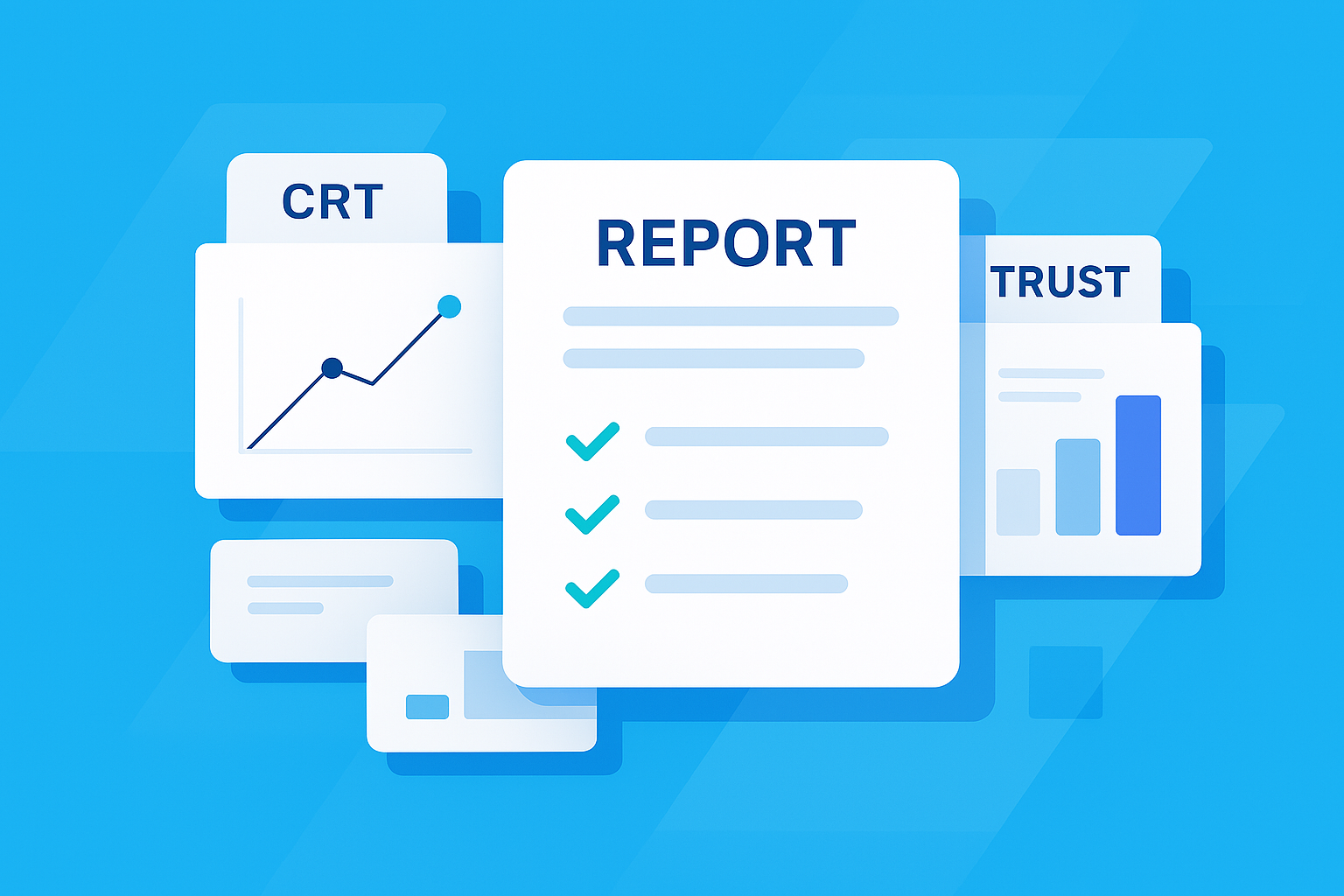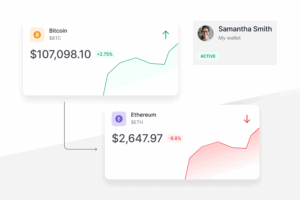Grantor Retained Annuity Trusts (GRATs) are a cornerstone of sophisticated estate planning, allowing individuals to transfer wealth to the next generation with significant tax efficiency. At Valur, we’re always exploring strategies to maximize the benefits of these powerful tools. One often-underestimated feature that can dramatically enhance a GRAT’s success is the power of substitution, commonly known as the “swap power.” This provision allows the grantor (the person setting up the trust) to exchange assets of equivalent value with the GRAT.
While seemingly straightforward, this flexibility offers potent valuation advantages, particularly when a GRAT’s assets have experienced significant upward or downward swings. Let’s dive into two key use cases—with numbers to illustrate the impact—where swapping assets, often for a promissory note, can be a savvy move to optimize your GRAT’s outcome.
Understanding the GRAT Basics
Before we explore the swap power, a quick refresher: a GRAT is an irrevocable trust into which you, the grantor, place assets. For a fixed term (e.g., two years), you receive an annual annuity payment. The goal is for the assets in the GRAT to appreciate at a rate higher than the IRS-mandated interest rate (the “Section 7520 rate” or “hurdle rate”) that was in effect when you funded the GRAT. Any growth above this hurdle rate, plus the returned principal, passes to your beneficiaries (e.g., your children or a trust for their benefit) free of federal gift and estate tax at the end of the GRAT term.
Many GRATs are structured as “zeroed-out” GRATs, where the present value of the annuity payments you receive is designed to equal the initial value of the assets transferred, resulting in a near-zero taxable gift. For example, if you fund a 2-year GRAT with $1,000,000 when the 7520 rate is 3.0%, your annuity payments would be structured so that, in theory, the GRAT would return assets worth $1,000,000 adjusted for this 3.0% rate. Any appreciation above this passes to beneficiaries tax-free.
The Swap Power: Your GRAT’s Strategic Lever
The power of substitution allows the grantor to reacquire an asset from the GRAT by substituting other property of equivalent fair market value. Critically, this power also ensures the GRAT is treated as a “grantor trust” for income tax purposes, meaning the grantor pays the income taxes generated by the GRAT’s assets. This is an added benefit, allowing GRAT assets to grow unhindered by income tax payments.
Now, let’s see how this swap power shines using a promissory note, which is essentially an IOU from the grantor to the GRAT so you don’t actually have to shift real assets or cash to the GRAT (you will only move assets from your personal estate to the remainder beneficiary when the trust ends).
Need some help to understand if this strategy is the right fit for you?
Use Case 1: Locking in Gains When Assets Soar
Imagine you funded a 2-year GRAT with $1,000,000 of stock in a promising private company (“StartupCo”). The 7520 rate at funding was 3.0%. To simplify, let’s say the total hurdle the assets need to overcome before a remainder is created for beneficiaries is roughly $60,000 over two years (approximately $1,000,000 * 3.0% * 2 years, though actual calculations are more precise). So, anything above $1,060,000 in value (initial $1M + $60k hurdle) at the end of the term is a tax-free gift.
Fast forward 18 months: StartupCo’s value has skyrocketed! Your initial $1,000,000 investment in the GRAT is now worth $2,500,000.
- Potential Remainder (Good News): If things stay this way, beneficiaries could receive approximately $2,500,000 – $1,060,000 = $1,440,000 tax-free.
- The Risk (Bad News): StartupCo is volatile. A market correction or company-specific news in the final 6 months could see its value drop significantly. If it fell back to $1,000,000, that $1,440,000 tax-free gift vanishes.
This is where the swap power becomes invaluable.
- The Strategy: You exercise your swap power. You “buy” the $2,500,000 of StartupCo stock back from the GRAT. In its place, you substitute a promissory note for $2,500,000 with an appropriate interest rate (e.g., the Applicable Federal Rate).
- Why It’s Powerful (Valuation Focus):
- Locks in Remainder Value: The GRAT now holds a stable $2,500,000 note. Even if StartupCo’s stock (now back in your personal hands) later plummets to $500,000, the GRAT’s value is secure. The potential gift of approximately $1,440,000 (the $2.5M note value less the remaining annuity obligations, which are based on the initial $1M funding and the 3% hurdle) is locked in for your beneficiaries.
- Reduces Risk: You’ve transformed a volatile asset within the GRAT into a fixed-value asset, ensuring the fruits of its high performance are preserved for wealth transfer.
Without the swap, you’d be riding out the GRAT term hoping the $1,440,000 gain holds. With the swap, you’ve captured it.
Use Case 2: Resetting the Clock When Assets Dip
Now, consider the opposite. You funded a 2-year GRAT with $1,000,000 of publicly traded stock (“StableCorp”). The 7520 rate was 3.0%. Again, let’s use the simplified hurdle of roughly $60,000 over the term.
One year in, however, StableCorp has unexpectedly underperformed due to an industry downturn, and the stock in the GRAT is now worth only $700,000.
- The Problem: For your beneficiaries to receive anything, StableCorp stock needs to recover from $700,000 to over $1,060,000 in the remaining year. That’s a climb of ($1,060,000 – $700,000) / $700,000 = 51.4% in just one year! The odds are low. This GRAT is likely to “fail,” meaning it will just return your annuity payments (from the diminished assets) and no remainder will pass to beneficiaries.
The swap power offers a strategic reset.
- The Strategy: You exercise your swap power. You “buy” the underperforming StableCorp stock (now worth $700,000) back from the GRAT by substituting a promissory note for $700,000. The original GRAT now holds this note and will likely use it to make your remaining annuity payments. It will likely “zero out” with no gift.
- The Next Step (The “Reset”): You take the StableCorp stock (which you now own personally, valued at $700,000) and contribute it to a brand new 2-year GRAT. Let’s assume the 7520 rate is still 3.0% for this new GRAT (or it could even be lower if rates have fallen, further improving odds).
- Why It’s Powerful (Valuation Focus):
- Lower Hurdle for Success: In this new GRAT, StableCorp stock only needs to outperform the 3.0% hurdle on its new starting value of $700,000. So, it needs to grow beyond approximately $700,000 + ($700,000 * 3.0% * 2 years) = $742,000 over two years for a remainder to be created.
- Increased Probability: A 3% annual growth target from $700,000 is far more achievable than the 51.4% one-year growth needed in the original, underwater GRAT.
- Capturing the Rebound: If StableCorp recovers to its original $1,000,000 value over the next two years while in the new GRAT:
- Value in new GRAT: $1,000,000
- Approximate hurdle: $742,000
- Potential tax-free remainder to beneficiaries: $1,000,000 – $742,000 = $258,000.
- Comparison: Without the swap and re-GRAT, achieving any remainder from the original GRAT was highly unlikely. By swapping and “re-GRATing,” you’ve turned a probable failure into a scenario with a strong potential for a significant tax-free gift of $258,000 if the asset simply recovers to its initial price.
This “reset” avoids wasting the remaining term of the original GRAT on an asset with a low chance of generating a positive return for beneficiaries.
Important Considerations
- Accurate Valuation: Fair market value appraisals are critical for both the asset being swapped out and the promissory note to ensure the “equivalent value” standard is met. This is especially true for non-publicly traded assets.
- Promissory Note Terms: The note must carry an appropriate interest rate (at least the AFR) to avoid unintended gift tax consequences. It must be a bona fide debt.
- Documentation: All swaps must be meticulously documented.
- Professional Guidance: These are sophisticated strategies. Always consult with experienced estate planning attorneys and financial advisors (like your team at Valur) to ensure they are executed correctly and align with your overall financial and estate planning goals. The examples above use simplified numbers for illustration; actual calculations involve more precise present value computations.
Need some help to understand if this strategy is the right fit for you?
The Valur Perspective
The power to substitute assets transforms a GRAT from a static vehicle into a dynamic tool. By understanding and strategically employing swaps—especially with promissory notes in response to significant asset valuation changes—grantors can proactively manage their GRATs. This might mean locking in substantial gains to secure a tax-free gift or resetting a GRAT that’s underwater to give assets a fresh chance at outperforming the hurdle rate. These actions can be pivotal in maximizing the wealth transferred to the next generation.
At Valur, we’re committed to helping you navigate the intricacies of advanced estate planning tools like GRATs. If you’re considering a GRAT or have one in place, discussing the strategic use of swap powers could unlock significant additional value.
About Valur
We’ve built a platform that makes advanced tax planning – once reserved for ultra-high-net-worth individuals – accessible to everyone. With Valur, you can reduce your taxes by six figures or more, at less than half the cost of traditional providers.
From selecting the right strategy to handling setup, administration, and ongoing optimization, we take care of the hard work so you don’t have to. The results speak for themselves: our customers have generated over $3 billion in additional wealth through our platform.
Want to see what Valur can do for you or your clients? Explore our Learning Center, use our online calculators to estimate your potential savings or schedule a time to chat with us today!






























